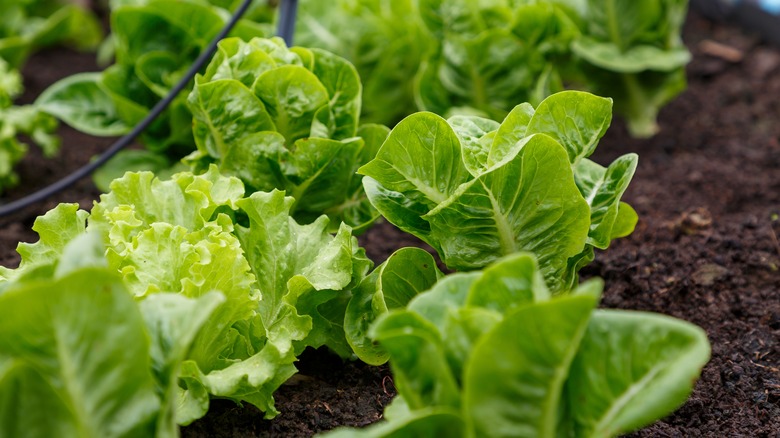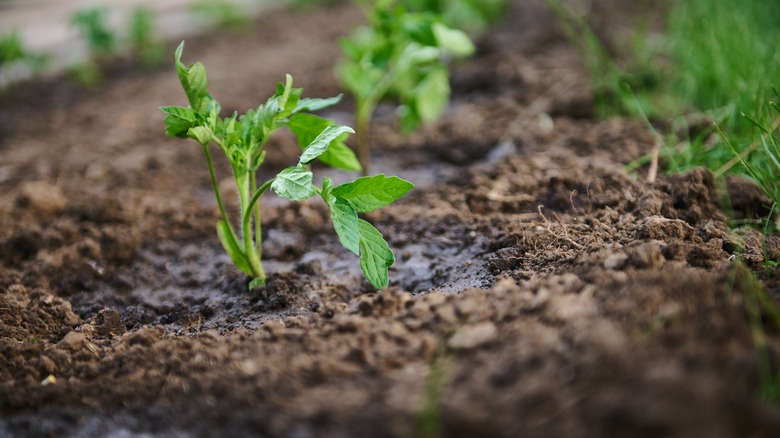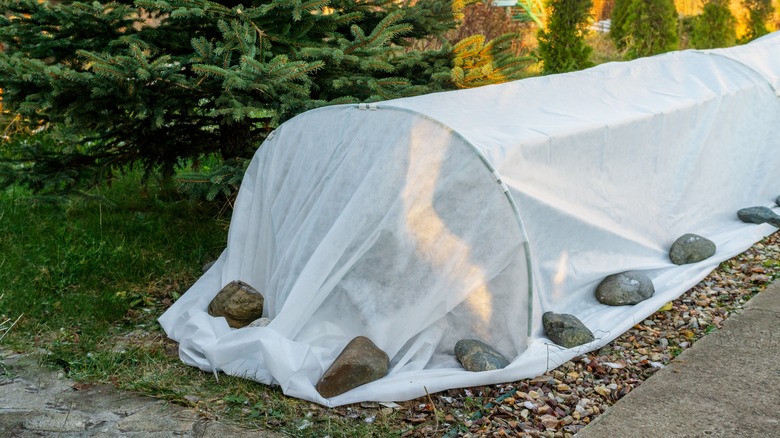What Is Succession Planting And How To Use It To Make The Most Of Your Garden Space
Whether you have limited garden space or just want to make sure you have a consistent supply of your favorite veggies, succession planting is an efficient way to do both. This practice is also excellent for growers who enjoy tending to their gardens by growing new plants each season.
The key to succession planting is using it for short-lifespan crops. For example, Brussels sprouts take 100 to 120 days to reach maturity, and you'll likely only be able to grow one generation of this crop while the weather conditions are favorable. Likewise, summer squash has a similar number of days to maturity, so they are a plant-once-and-grow-all-season kind of vegetable. With that in mind, plenty of veggies have much shorter lifespans of around 45 days or less, like radishes which can be planted every few weeks from spring until fall — but watch out; they get spicy in the summer months. Here are some crops for which you can use the succession planting method each season.
Spring succession crops
If you live in a region with a long, mild spring, you may be able to keep sowing seeds to keep cool season crops going until it gets too hot. Even in warmer climates, you can direct sow some seeds in succession as soon as nighttime temperatures exceed freezing. The easiest way to keep your garden producing in the spring is to grow succession crops that are best started from seed. Peas do not transplant well, but they sprout and produce quickly when directly sown into the soil. Likewise, head and leaf lettuce seeds can be planted every two weeks for a constant harvest. Stop planting spring crops about 30 days before you consistently expect daytime temperatures to be above 80 degrees Fahrenheit.
Other spring succession crops include leafy greens like arugula, bok choy, and Swiss chard. If you are a fan of cilantro, this herb grows quickly and can transition from spring to summer when seeds are grown in succession. One of the best things about cilantro is that if you let it bloom and go to seed, you can harvest those seeds for coriander. You can prolong your spring season greens by growing them in areas of your garden that get partial shade.
Summer succession crops
You probably know that tomatoes are a summer crop, but did you know that in warmer climates, some varieties of seedlings can also be planted in succession? Determinate varieties of tomatoes – those that only produce a certain amount of fruits that mature within a few weeks — are an excellent succession crop for those who like to can their harvest. They also happen to be super easy to propagate. When your first tomato plants are over two feet tall, take a cutting of a stem portion that includes a few leaves. Place that stem in water and let it produce roots. Once those roots are several inches long, plant your new seedling and keep the ground consistently moist until the plant is established (just a few weeks). After your first tomato plants have finished producing, you will get a second bumper crop from their clones. There is no need to do this with indeterminate varieties since they produce fruits for as long as conditions are favorable.
Summer squash, including zucchini and yellow crookneck varieties, can also be planted in succession since they only produce for a month after maturity. Cucumber plants tend to have a short production period, so for fresh cucumbers or pickling, plant seeds every two weeks for a continuous harvest until about two months before your first expected frost date, according to your USDA Hardiness zone.
Fall and winter succession crops
Your ability to successfully grow succession crops in the fall and winter depends on where you live and if you are able to offer any protection from extreme cold. In northern regions, you may only be able to get one or two generations of cool-weather vegetables in before the ground freezes. If you live farther south, you may be able to grow vegetables like kale and leaf lettuce well into the winter months. With some preparation, you may even be able to harvest fresh cool, weather veggies year-round.
By using a floating row cover secured to PVC pipe over your beds, you can extend your growing season considerably. You can even replace frost cloth with 6 mil plastic to create a mini greenhouse for your frost-tolerant plants. Winter growing is a fun way to experiment with gardening to see how far you can get away with defying mother nature.



